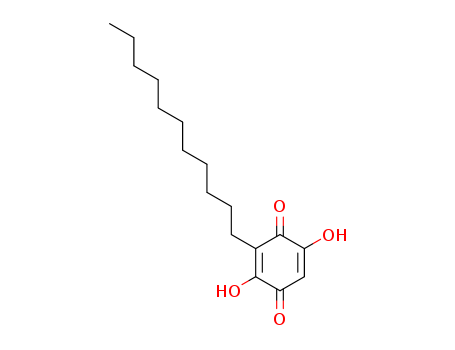- Chemical Name:Embelin
- CAS No.:550-24-3
- Molecular Formula:C17H26 O4
- Molecular Weight:294.391
- Hs Code.:2914690090
- European Community (EC) Number:208-979-8
- NSC Number:91874
- UNII:SHC6U8F5ER
- DSSTox Substance ID:DTXSID80203537
- Nikkaji Number:J6.710E
- Wikipedia:Embelin
- Wikidata:Q27068169
- Pharos Ligand ID:6DPN743TCGH7
- Metabolomics Workbench ID:49997
- ChEMBL ID:CHEMBL221137
- Mol file:550-24-3.mol
Synonyms:2,5-dihydroxy-3-undecyl-1,4-benzoquinone;embelin;potassium embelate




